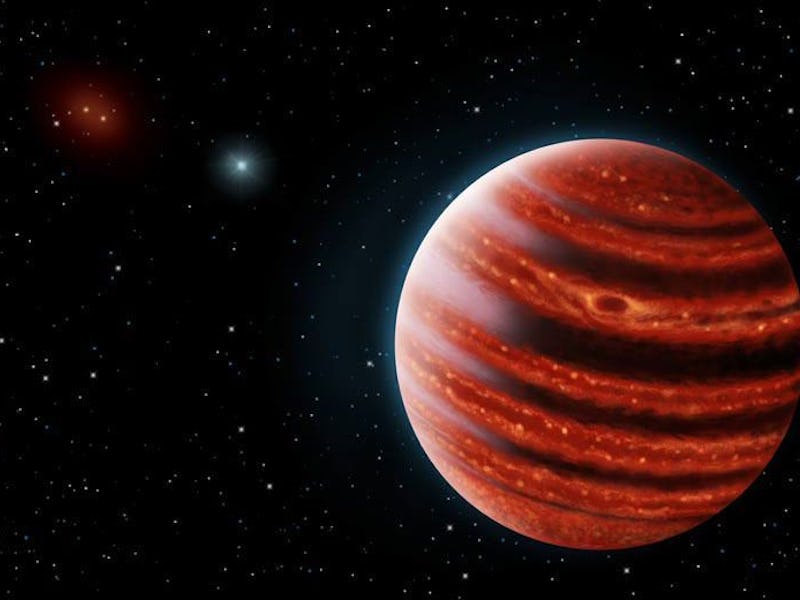Astronomers Just Discovered a Cradle of Baby Jupiter Exoplanets
Will most likely grow up to be the biggest kids on the block.

The exoplanet research community can get excited; there are two new baby Jupiter-like planets, taking shape and forming around the star HD 100546, located 320 light-years from Earth. And the little bundles of joy look healthy.
A team of astronomers, led by Thayne Currie at the Subaru Telescope located at the Mauna Kea Observatory in Hawaii used the Gemini Planet Imager in the Chilean Andes to help find and identify the two planets. The planets are still actively growing by accreting nearby gas and dust flowing throughout the star system. Currie and his colleagues presented their findings Tuesday at the Extreme Solar Systems III conference in Waikoloa Beach, Hawaii.
Image of HD 100546 obtained with GPI at near-infrared wavelengths.
The discovery was made about seven years after HD 8799 and its planets became the first multi-planet system to ever be imaged and discovered. HD 100546 looks a lot like HD 8799, providing hopes that scientists can use the new star system to explore the evolution and growth of a multi-planet system like our own solar system.
There’s also another big ramification of the findings. Current exoplanet research often relies on space telescopes like Hubble or Kepler in order to really discover and characterize different exoplanets. Because they’re off the surface of the Earth, they have a better wide-field view. Many like Hubble also have instruments for collecting optical data — and not just infrared like GPI.
Through this study, however, Currie makes the case that ground-based equipment, if it’s properly developed and implemented, can work just as well. Tools like GPI are “starting to bridge the gap” between what’s visible and what’s really out there. It might be more cost-effective to simply augment observatory equipment here on the surface instead of making plans to launch different probes and telescopes out into interstellar space.
Lisa Kaltenegger, an astronomer and exoplanet researcher at Cornell University who was not involved with the study, agrees with that sentiment. “I love the optimism of what we can do on the ground,” she says. As the ultimate goal of exoplanet research is to find another world like Earth that’s capable of sustaining life, the best place to conduct that research might actually be right here on Earth itself.